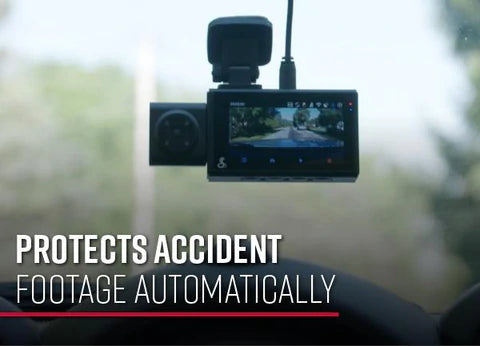From the Racing Circuit to Your Car – Cobra Electronics
From the Racing Circuit to Your Car: 24 Hours of Le Mans

Image Source : www.motorsport.com
What does the 24 Hours of Le Mans endurance car race have to do with the vehicle you're driving to work every day? More than you might think. Historically, the goal of the race was for automobile manufacturers to prove the reliability and durability of their vehicles, and the cars driven in the early days of the Le Mans were more or less the same ones a person could buy from the dealer – after all, the goal was to show why a customer should buy a particular manufacturer's car. While the race cars on the track today are no longer the models available at your local dealership, Le Mans is still an event where new and innovative technologies are tested, often before being incorporated into passenger vehicles.
Here are just some of the innovations that have been developed or tested during the Le Mans and other auto racing events:
- The seatbelt
- Windshield wipers
- Fog lights and halogen headlights
- Disc brakes
- Power train technologies
- Fuel system improvements, including methods of improving fuel efficiency, automotive battery technologies, and other alternative fuel systems
While it might not have been developed specifically for races like Le Mans, another popular automotive technology can be found in vehicles on the track and in daily driving: dash cams. These cameras may be used in slightly different ways in races, but they offer real benefits to your day-to-day commute.
Dash Cams and Rear-View Cameras

A dash cam is an important safety feature for any driver, but they're also integral to safe and effective driving during the Le Mans. On-board cameras, particularly those that provide a wider and more comprehensive view of the road behind the car than a standard rear-view mirror can, allow the drivers to better see their competitors approaching from behind. They can see who is approaching from the rear, who is keeping pace, and who may be passing – all of which are key to avoiding a dangerous collision.
You may not be worried about a competitor approaching rapidly from behind, but installing a forward and rear-facing dash cam in your vehicle can allow you to record what's happening around you in case an accident does occur. A smart camera system like the Cobra SC 200D captures the road around you in high resolution. It also gives you hands-free control, so you can keep your eyes on the road and your hands on wheel. Paired with real-time alerts from the Drive Smarter® app, you'll have advance warning of red light cameras, speed camera locations, and other important alerts.
Cobra dash cams even provide many of the benefits that radar systems in Le Mans cars provide. Radar is used in race cars to alert drivers to upcoming traffic, closing speed, and when competitors are passing. This type of advanced driver assistance system has found a home in Cobra dash cams, which can alert drivers when they are drifting from their lane and when there's risk of a forward collision. Other security features, like Motion Sensing to record when someone is approaching the vehicle and Parking Mode to record a bump or collision while the vehicle is parked, provide video footage of what happened to your car when you were away.
Two-Way Radios

Drivers in the Le Mans race are in constant communication with their teams, and two-way radios have been used during the race since 1949. While the setup is a bit different from the convenient hand-held two-way radios available from Cobra, the ability to keep in communication is just as indispensable. We would never recommend using a Cobra two-way radio while driving, but they are a vital form of communication when camping, hiking, or biking, or when traveling where mobile phone service is not reliable.
24 Hours of Le Mans is one of the most famous motorsport races, but its value is in more than the joy we experience in following the progress that a team of drivers makes. With cars from Porsche, Ferrari, Chevrolet, and the 2022 winner Toyota on the circuit, the technologies that help a competitive team perform well often find their way into consumer cars. Tools such as dash cams help make driving safer, while two-way radios are a simple and reliable way to keep in communication. We're eager to see what new innovations make their way from Le Mans into passenger vehicles in the years to come.
 |
|